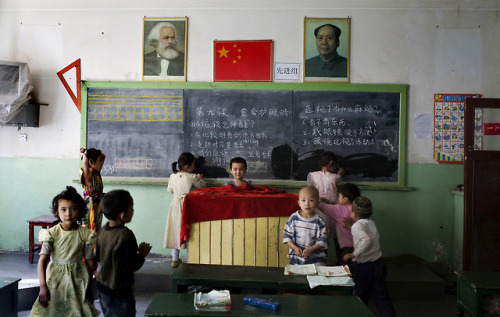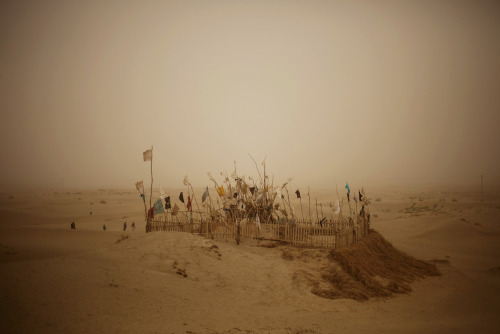Carolyn Drake: Uyghurs (Encounters)previously posted hereArtist Statement:The Uyghurs are Turkic-spe
Carolyn Drake: Uyghurs (Encounters)previously posted hereArtist Statement:The Uyghurs are Turkic-speaking Muslims who have traditionally worked as farmers and traders in cities and villages on the edges of the Taklimakan desert, in what is now northwest China. The Xinjiang Uyghur Autonomous region, which takes up a fifth of China’s land mass, was self-sufficient and sparsely populated for centuries, but in recent years the Chinese government has encouraged millions of loyal Han Chinese to migrate west. The “Go West” policy has enabled the government to hold a tighter grip on its western frontier and exploit its abundant natural resources, but most of the province’s 10 million Uyghurs are pushed to the fringes of this growth, where their ability to practice their religion, speak their language, run family farms, and perpetuate their 2000-year-old culture are severely restricted.Since my first trip to the Xinjiang province in 2007, I have been documenting the disappearing spaces of Uyghur lives. The changes taking place there undermine the intricate network of markets, families, schools, mosques, and pilgrimage sites that once connected smaller outlying villages to larger central ones to make this society work.While the Tibetan struggle for independence from China has long captivated the West, the plight of the Uyghurs has been left out of the spotlight. Their anonymity is perplexing, not only because their two thousand year old culture is vanishing, but because the West has played a role in their crisis. In 2001 the US captured 22 Uyghurs and imprisoned them in Guantanamo as terrorism suspects, later to admit their innocence. These and other actions have helped validate China’s accusations: “Experts have warned that terrorism might be the real driving force behind the violence,” declared the government-controlled Chinese media after the Urumqi riots in 2009.I aim to challenge the politically slanted storylines by working toward a compassionate story of the Uyghurs told from inside their world. Living on the crossroads between Europe and Asia, their culture absorbed elements of eastern and western faith, art, and philosophy through the centuries, and their character defies easy classification.*second last image: the remains of Tarim lake, which used to cover over 4,000 sq miles -- source link
Tumblr Blog : 5centsapound.tumblr.com









